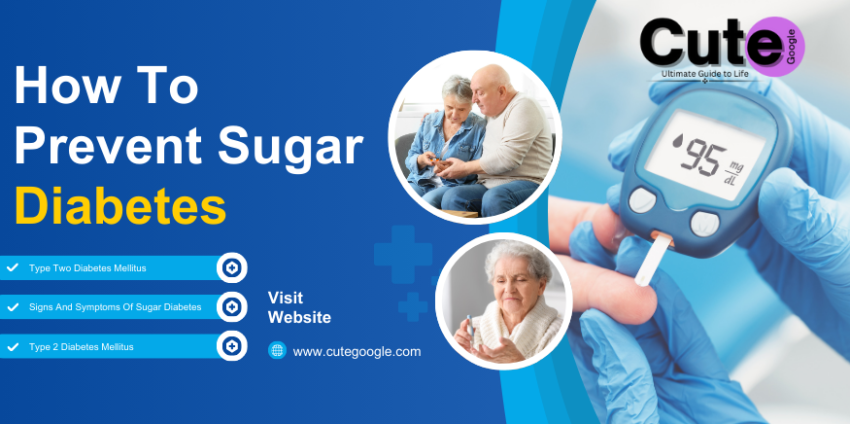Understanding Diabetes Types, Symptoms Preventive, and the Way to a Better Health
Diabetes is something that most people have heard of and yet, many don’t know what it really means and how it impacts our lives. It doesn’t matter if it’s a person you’ve met or you’re on your way through managing diabetes; knowing the basic concepts–and more important facts—can be transformative.
This article provides the symptoms of diabetes as well as the actuality of Type 2 diabetes mellitus and the differences between the two types of 2 diabetes as well as how to identify the indications and symptoms of diabetes sugar at an early stage. The guide will also provide specific steps on what you can do to avoid developing sugar diabetes in particular, in the event that it is a common occurrence in families or places you in danger.
Let’s take it apart in straightforward, easy phrases.
What Is Diabetes?
The condition known as diabetes is a condition that is chronic and impacts how your body converts foods into fuel. After eating it, your body is able to break down the majority of the food you eat to sugar (glucose) that is then absorbed into your bloodstream. Your pancreas releases insulin, which is a hormone that assists in helping the sugar get to your cells to become energy-producing.
If you suffer from diabetes, it is the case that your body is either unable to produce sufficient insulin or isn’t able to use it correctly. The result is that sugar increases in the bloodstream, which can cause severe health issues over the course of time.
Diabetes Symptoms: What Should You Look Out For?
The recognition of initial signs of diabetes is vital. There are many people who suffer from it for a long time without even realizing it simply because the symptoms can be minor or ignored.
Below are the most frequently reported indicators to keep an eye on:
- Uterine frequency, particularly in the night
- A lot of thirst
- Unexplained weight loss
- In constant fatigue or a lack of energy
- A blurry vision
- Injuries that are slow-healing
- More hunger
- A tingling sensation or numbness in the feet and hands
They usually appear slowly and are more common in Type 2 diabetes mellitus; this is the reason it’s often referred to as the “silent” disorder. If you catch it early, you have the best chance of tackling the condition effectively and avoiding the onset of complications.
Type Two Diabetes Mellitus: The Most Common Form
Typ two diabetes mellitus (T2DM) is the most prevalent form of diabetes that is found throughout the world. It typically develops in adulthood, but young people are currently being diagnosed because of the rising prevalence of obesity and the sedentary lifestyle.
When you have this kind of condition, the body is either intolerant to insulin or it doesn’t produce enough to maintain blood sugar levels in balance. In time, high blood sugar levels can harm various organs like your kidneys, heart, eyes, and nerves.
Some key risk factors for developing type 2 diabetes include:
- Being overweight or obese
- Physical inactivity is not as high
- Diets that are poor (especially high in sugar and processed food items)
- Diabetes in the family
- Cholesterol or high blood pressure
- Aged over 45
Type 2 Diabetes Diabetes Mellitus: Managing It for a Better Life
In the event that you’ve been diagnosed as having the type 2 form of mellitus, do not panic. What’s good is you can be treated, sometimes even reversed, with certain lifestyle adjustments.
Here’s how:
- healthy eating The key is to focus on the healthy whole foods such as fruits, legumes, vegetables Whole grains, as well as healthy fats. Avoid refined sugars, refined carbs, and processed food.
- Regular exercise Goal: to spend a minimum of 30 minutes per week, every day of the week. Swimming, walking, cycling and yoga are excellent choices.
- Blood sugar monitoring You should check your blood sugar levels frequently, according to the guidelines provided by your physician.
- Medication Certain individuals may require medication via oral or insulin injections, in particular when lifestyle modifications alone do not suffice.
- Management of stress Stress management: Continuous stress can increase blood sugar levels. You can try mindfulness, meditation or easy breathing exercises.
The fact that you suffer from type 2 diabetes isn’t a reason that you cannot enjoy your life. It is just taking treatment for the health of your body and making mindful decisions every single day.
Signs and Symptoms of Sugar Diabetes: Don’t Ignore These Red Flags
“Sugar diabetes” is a term that’s commonly used to describe sugar-related diabetes and is commonly used to describe mellitus or diabetes, especially in relation to a high level of blood sugar. The indications and symptoms of the condition are basically the same as the typical diabetes signs mentioned earlier. However, let’s review the red warning signs again:
- Tired and exhausted even after the rest
- You’re always thirsty no what you consume
- Go to frequent bathroom breaks, especially during the night
- Atypical weight loss, but without any effort
- Sudden vision changes
- Itchy or dry skin
- Abrasions, cuts and bruises are difficult to heal
- It is possible to experience mood swings or irritability.
Don’t hesitate to visit a doctor when you experience these symptoms. Simple blood tests can determine high glucose levels, and get the ball rolling on the right treatment.
Difference Between Type 1 and Type 2 Diabetes: Clearing the Confusion
It’s very easy to get lost between the two primary forms of diabetes. Let’s look at the distinction between type 1 and 2. Diabetes in easy words:
Type I Diabetes
- Usually, it is diagnosed in the earliest years of young people or children.
- The immune system of the body attacks insulin-producing cells in the pancreas.
- The body produces very little to no insulin.
- Type 1 diabetics require insulin injections throughout their lives.
- It is not preventable, but it can be managed
Type 2 Diabetes
- Most often, it occurs in adulthood (but is now becoming more prevalent in younger adults)
- The body develops insulin resistance or does not create enough insulin.
- Often, it is linked to the way we live, such as eating habits, weight gain, or physical inactivity
- It is often manageable or reversed by fitness, diet, and medications
- It is possible to prevent in several instances
Simply put, Type 1 is an autoimmune condition that is diagnosed early and demands constant insulin. Type 2 develops later, typically due to environmental factors and may not require injections.
How to Prevent Sugar Diabetes: Small Steps, Big Impact
We’ll now discuss the best ways to stop sugar-related diabetes particularly Type 2 Diabetes and type 2 diabetes, which is generally avoidable.
Here’s the way you can reduce your risk of getting sick:
1. Take a balanced and healthy diet
Concentrate on foods that are rich in fiber, such as fruit, vegetables as well as legumes and grains. Limit your consumption of sweet drinks as well as processed foods.
2. Make More Moves
Training can help your body make better use of insulin. Try to mix cardiovascular exercise (like swimming or walking) as well as strength training.
3. Keep a Healthy weight
Losing just 5-10 percentage points in body weight can dramatically reduce the risk of getting type 2 diabetes.
4. Stop drinking Alcohol and stop Smoking
Both can raise your risk of developing diabetes or other chronic illnesses.
5. Have regular health screenings
If you’re older than 45 and overweight or have relatives with diabetes, ask your doctor to check for prediabetes or the early stages of the signs of diabetes.
The prevention of diabetes caused by sugar doesn’t require abstaining from everything you love; it just is being more conscious about the choices you make every day.
Real Talk: Living with Diabetes
Being a diabetic isn’t always simple. It can bring challenges–physically, emotionally, and even financially. The truth is that when you have the right techniques, tools and attitude, It is completely feasible to enjoy a healthy happy, and fulfilled life.
Here are some encouraging ideas:
- It’s not just you. Millions are taking care of diabetes each day.
- Information is power. As you gain knowledge, the more informed decisions you can make.
- Progression is more crucial than perfection. Small changes can result in significant results over the course of time.
- Assistance is helpful. If you’re a diabetes educator or support group online communities, don’t be afraid to help other people.
Final Thoughts: Choose Your Health, One Step at a Time
The fact that diabetes isn’t life-threatening doesn’t mean it’s an opportunity to change your life. If you recognize earlier symptoms of diabetes and knowing the distinction between the two types of 2 diabetes and take concrete actions on what you can do to avoid the onset of diabetes due to sugar by making a choice to take a stand of understanding as well as self-care and responsibility.
Be aware that whether you’re battling the condition of type 2 mellitus or just taking a proactive approach, each healthy food, every step and every blood sugar test is an opportunity to live a healthier, longer existence.
It’s possible to be left alone in the process.







